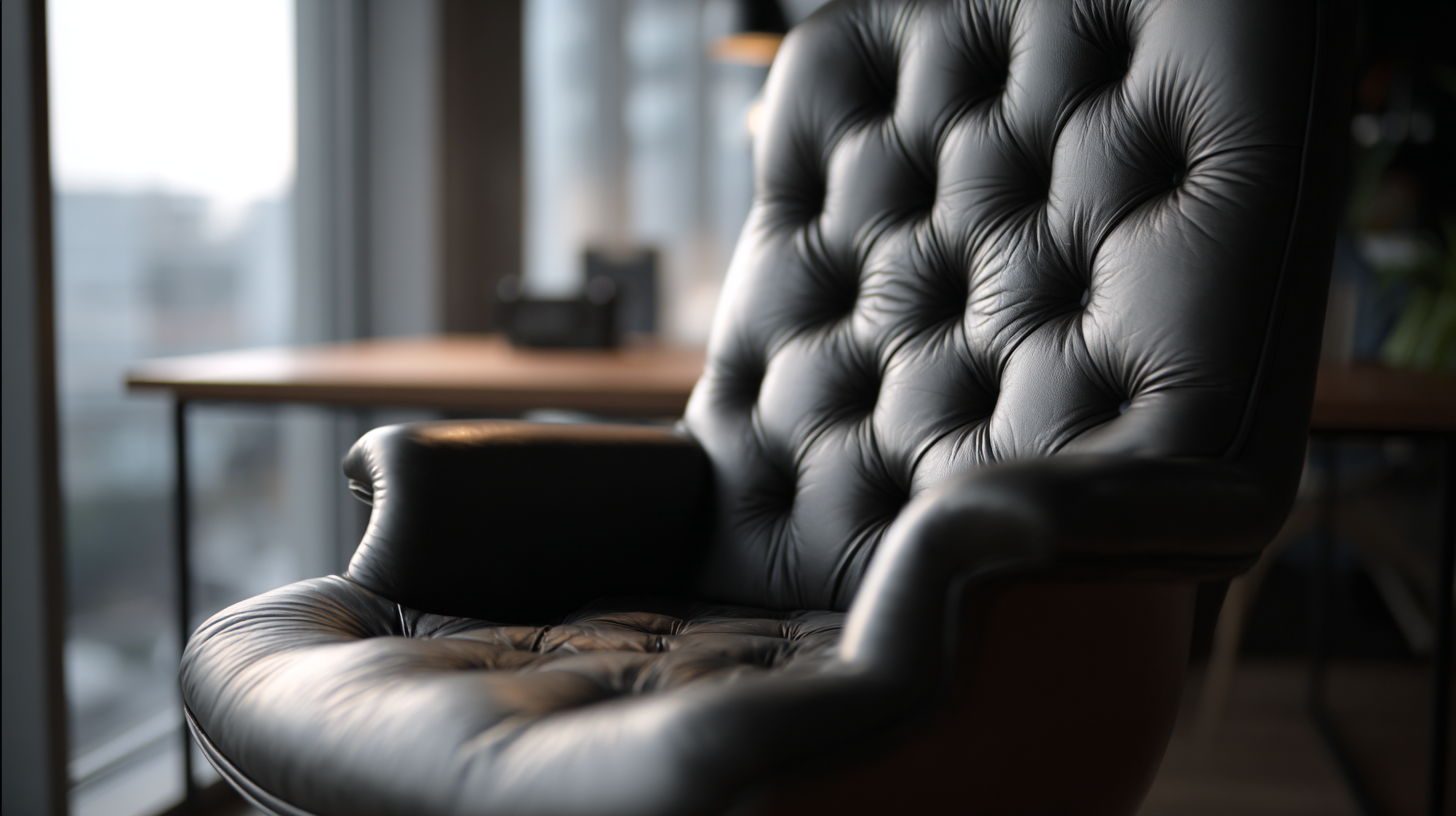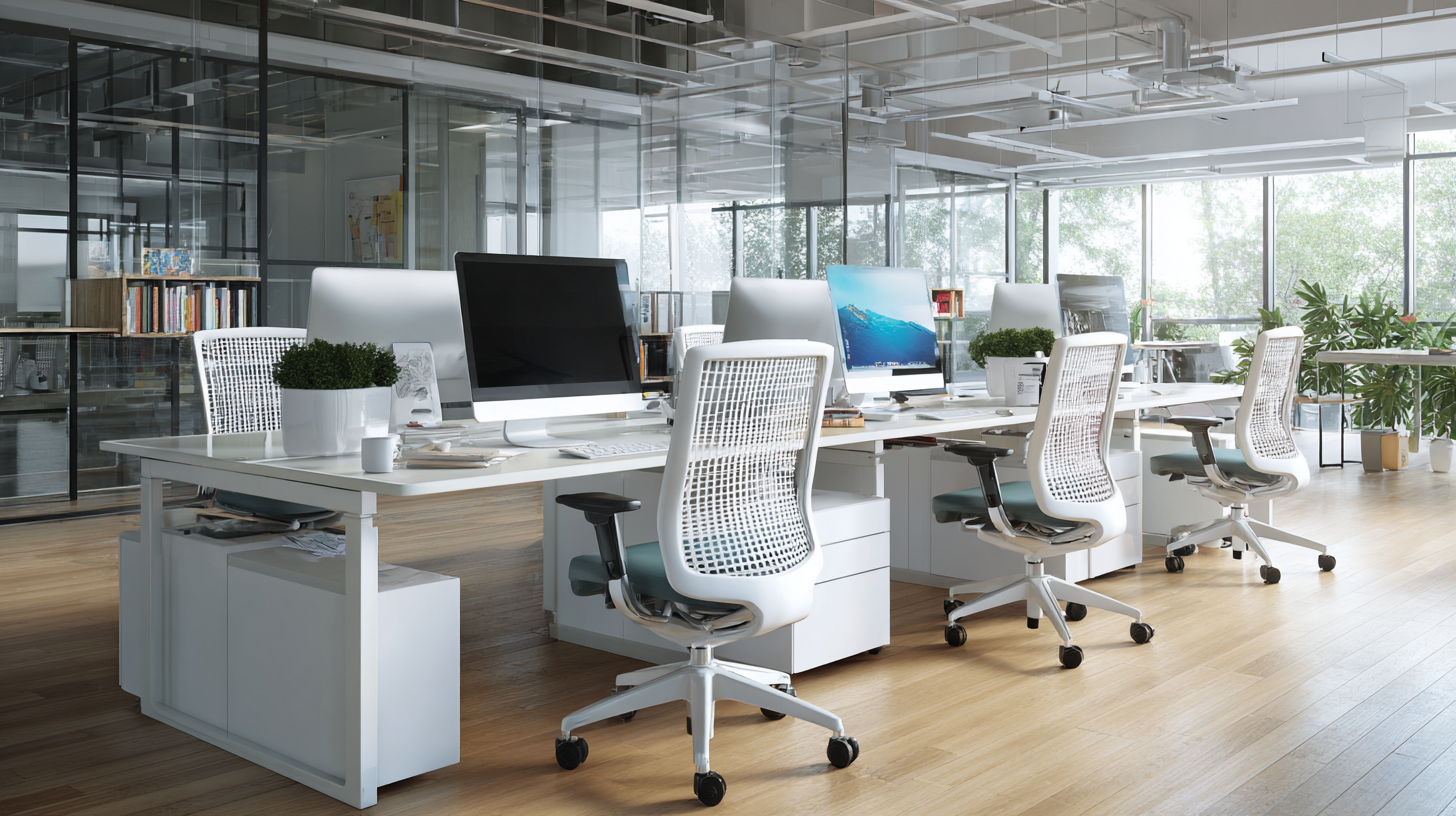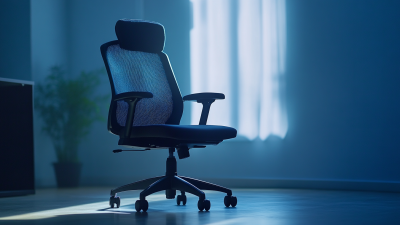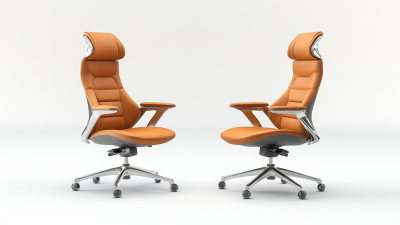The modern workplace is evolving, and so are the expectations regarding employee comfort and productivity. A key element that frequently influences these outcomes is the type of furniture used, particularly executive chairs. Research indicates that ergonomic office furniture can enhance productivity by up to 17% and significantly reduce discomfort-related absenteeism, with approximately 70% of employees reporting improved focus when utilizing suitable seating arrangements (International Journal of Workplace Health Management, 2022). As organizations strive to foster a more productive environment, investing in high-quality executive chairs is not merely an aesthetic choice but a strategic decision that can yield considerable returns. Understanding the profound impact of such seating solutions on workplace comfort and efficiency is critical for any forward-thinking organization aiming to optimize their workforce performance and well-being.

Executive chairs play a pivotal role in enhancing workplace productivity by providing the comfort and support necessary for long hours of work. These ergonomic designs promote better posture, reducing the risk of back pain and discomfort that can hinder focus and efficiency. As remote work becomes more prevalent, the importance of a well-designed executive chair cannot be overstated; it is a critical component in creating a conducive home office environment. By prioritizing ergonomic features, businesses can help employees maintain their well-being, ultimately leading to improved concentration and output.

Moreover, the investment in quality executive chairs aligns with broader trends in workplace wellness and employee satisfaction. Organizations that emphasize ergonomic solutions often find that employee morale improves, resulting in a more motivated workforce. Additionally, enhancing the physical workspace with proper seating is just one aspect of creating a thriving office. Elements like adequate lighting and thoughtful layout design also contribute to an environment where productivity flourishes. As companies seek to harness the full potential of their talent, understanding and implementing effective workplace ergonomics will remain a crucial strategy in fostering a healthier and more efficient workforce.
When it comes to enhancing workplace productivity and comfort, the design of executive chairs plays a pivotal role. Key features such as ergonomic design and adjustable components significantly contribute to the overall user experience. An ergonomic chair is specifically designed to support the natural posture of the body, reducing strain on the back and neck during long hours of sitting. Features such as lumbar support and adjustable seat height allow users to achieve a customized fit, enhancing comfort and promoting better concentration.
Moreover, materials used in executive chairs also impact comfort. Breathable fabrics and high-density foam cushioning can alleviate pressure points, enabling extended use without discomfort. Additionally, incorporated features like retractable armrests and swivel bases can facilitate easier movement and access to different areas of the workspace. Ultimately, investing in an well-designed executive chair can lead to improved satisfaction and productivity among employees, as it encourages a conducive work environment tailored to individual needs.
Creating an ergonomic workspace significantly influences both productivity and comfort at work. With a well-designed chair, employees are less likely to experience discomfort from poor posture, thus reducing the risk of repetitive strain injuries. Selecting the right chair goes beyond aesthetics; it involves understanding how features like adjustable heights, lumbar support, and breathable materials can cater to individual needs. As more workers become aware of the importance of comfort, companies are moving towards sustainable office furniture that meets ergonomic standards.
**Tips for Choosing the Right Chair:**
1. Look for chairs with multiple adjustments. Customizing height, armrest position, and tilt can help accommodate various body types.
2. Consider the material. Breathable and supportive fabrics can enhance comfort during long hours at a desk.
3. Test before purchasing. If possible, try out different models to see which one provides the best support and comfort for your specific needs.
Investing in ergonomic chairs not only enhances productivity but also contributes to a healthier workplace environment, which is more vital than ever as work dynamics continue to evolve.
Choosing the right executive chair is crucial for enhancing workplace productivity and comfort. When selecting an executive chair, consider ergonomics as a top priority. An ergonomic design supports the natural curve of your spine, promoting better posture during long working hours. Look for adjustable features such as seat height, backrest angle, and armrest positions to tailor the chair to your body type, ensuring maximum comfort and reducing the risk of musculoskeletal issues.
Additionally, the material of the chair plays a significant role in both comfort and aesthetics. Leather and high-quality fabric provide different levels of durability and comfort; choose one that suits your office environment and personal style. Adequate cushioning can also enhance comfort over extended periods of sitting. Finally, consider the chair's mobility and stability. A chair with smooth-rolling casters and a stable base can facilitate movement around the workspace, making it easier to collaborate and stay productive throughout the day. By focusing on these factors, you can select an executive chair that meets your needs and contributes to a more efficient work environment.
| Chair Type | Comfort Rating (1-10) | Productivity Impact (%) | Price Range ($) | Adjustability Features |
|---|---|---|---|---|
| Ergonomic Office Chair | 9 | 20% | 300 - 800 | Height, Armrest, Lumbar Support |
| Executive Leather Chair | 8 | 15% | 500 - 1200 | Height, Recline |
| Mesh Task Chair | 7 | 10% | 200 - 600 | Height, Backrest Angle |
| High-Back Office Chair | 8 | 12% | 400 - 900 | Height, Tilt, Lumbar Support |
| Bean Bag Chair | 6 | 5% | 50 - 150 | None |
Maintaining your executive chair is essential for long-term comfort and durability, particularly in a workplace environment where productivity is closely tied to employee comfort. Regular maintenance, including cleaning and adjusting the chair's components, can significantly extend its lifespan and ensure optimal support. Most modern executive chairs come with adjustable features, allowing users to tailor the settings to their individual needs, which is crucial for maintaining ergonomic posture during extended work hours.

Investing in a high-quality executive chair that combines durability and comfort is just the beginning. Simple upkeep, such as lubricating moving parts and checking for wear and tear, can prevent larger issues that might arise from neglect. Moreover, ensuring that the chair fits the user's body correctly can help minimize discomfort and help maintain focus and efficiency throughout the day. As the emphasis on wellness in the workplace grows, the role of a well-maintained chair becomes even more significant in fostering a productive working environment.






Update your browser to view this website correctly. Update my browser now
